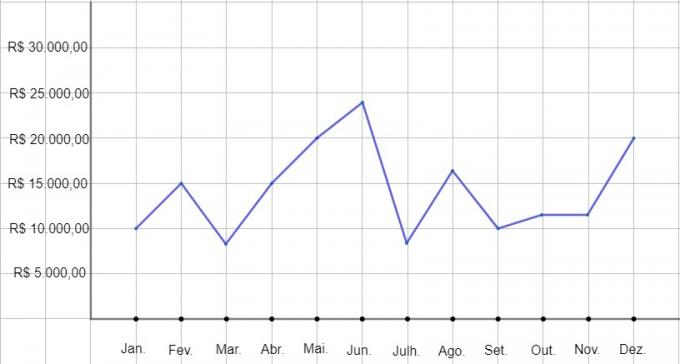One high school function is one that can be written in the form: f (x) = ax2 + bx + c. All occupationofseconddegree can be represented geometrically in the flat through a parable. In the case of first degree functions, we can represent them by straight, and part of the procedure used to construct them can also be used in constructing the parables, although the figures are very different.
Second degree function graph
First, to build a parable, it is necessary to have some reference of the format of this figure. The following image is an example of a parable:

In the functions of seconddegree, this graphic can have the concavity (opening) facing up or down.
Given the function of the second degree f (x) = x2, note your values in the following table:
x |
f(x) |
y |
– 2 |
f(– 2) = (– 2)2 |
4 |
– 1 |
f(– 1) = (– 1)2 |
1 |
0 |
f (0) = (0)2 |
0 |
1 |
f (1) = (1)2 |
1 |
2 |
f(2) = (2)2 |
4 |
Table of values of the parable
By marking the ordered pairs in the Cartesian plane and connect these dots, based on the parable given above, we have the following representation:

practical method
The method given above depends on finding the point where the parable it stops being decreasing and becomes increasing, or vice versa. We must then find the points of the parable that are to the left of this point and others that are to the right.
To avoid the problem of finding this point by trial and error, there is a practical method to find the points on the graph of the high school function which, consequently, can be used to make this representation. This method will be discussed in the following walkthrough:
1 – Find the roots of the function
To find the roots gives occupation, just use the Bhaskara's formula. However, even when the function has no roots, we can build its graphic.
Given the x roots1 and x2 of a function, the coordinates of these roots at the flatCartesian will always be: A (x1, 0) and B (x1, 0).
2 – Find the vertex
There are two ways to find the coordinatesofvertex of a parable through occupationofseconddegree. The first is to average the values of the roots. The result of this calculation will be the x coordinate of the vertex. Substituting this coordinate in the function, we will find the y coordinate of the vertex.
The second way to find the coordinates of the vertex of a parable, through occupationofseconddegree, is using formulas. Are they:
xv = - B
2nd
yv = – Δ
4th
At coordinates of vertex are V(xvyyv).
3 – Build the chart
Given points A, B and V, we can connect them using the figure in parable given at the beginning of the text. If the function has no roots, proceed as follows:
Find it vertex using the formulas;
Choose a value for x greater than xv and a value for x less than xv;
Substitute each of the chosen values for x in the function rule to find its respective y value;
Following the three previous steps, we will have three points enough to build the parable.
Example
Graph the function f(x) = x2 – 4.
1 – To find the roots:
Using the formulainBhaskara, we found x1 = 2 and x2 = – 2, therefore, A (2, 0) and B (– 2, 0).
2 – Using the formulas, the coordinatesofvertex they are:
xv = - B
2nd
xv = – 0
2
xv = 0
yv = – Δ
4th
yv = - (B2 – 4ac)
4th
yv = – (02 – 4(– 4))
4
yv = – (16)
4
yv = – 4
Therefore, V(0, – 4).
3 – The graph, therefore, will be:

Take the opportunity to check out our video lesson related to the subject:



